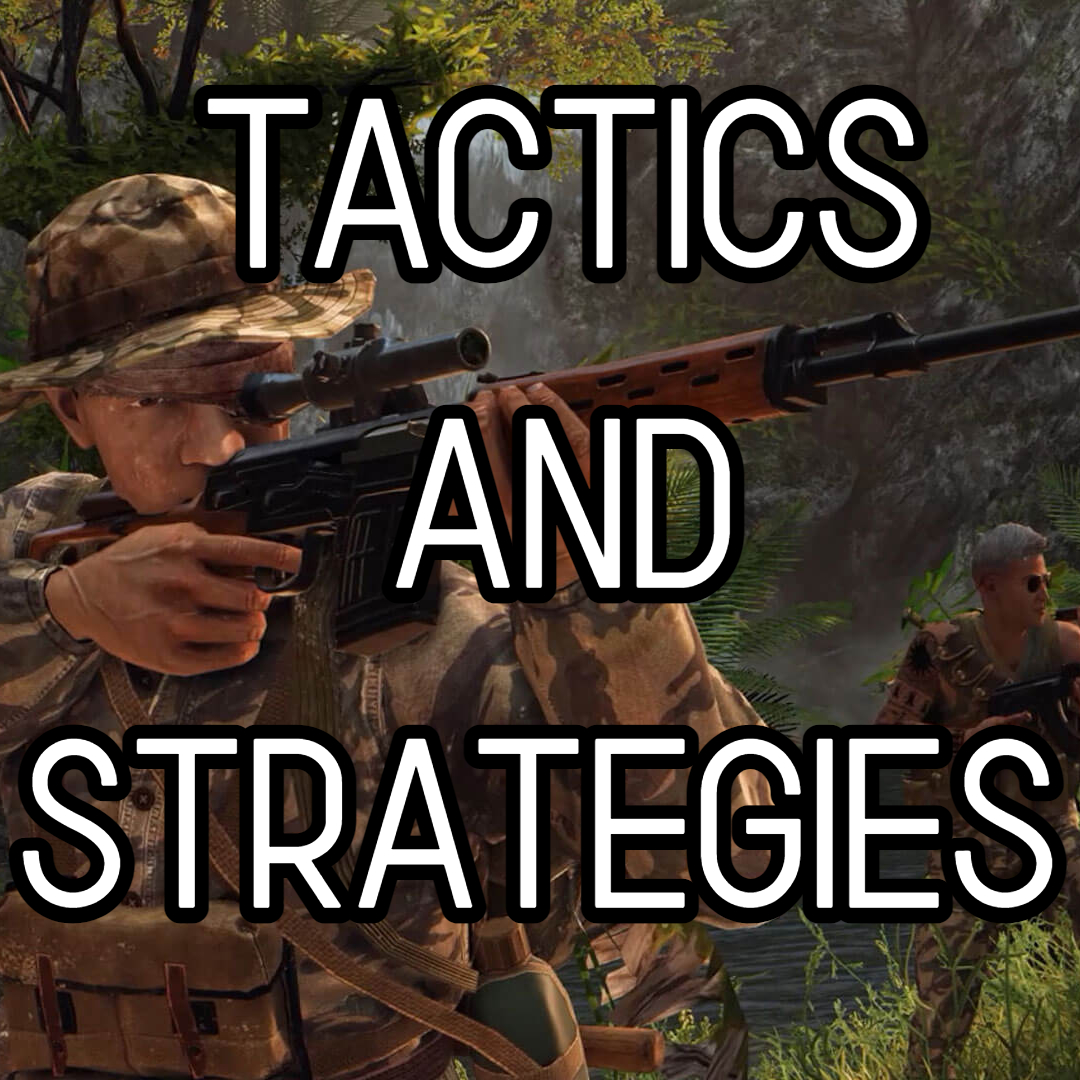Overview
An in depth guide explaining tactics and strategies used in the actual Vietnam war, some history, and how they are used in game.
Introduction
This guide is to explain actual tactics and strategies used in the Vietnam war and how they can relate to in game tactics and strategies. This guide will break down some history of certain operations and examples, what they represent in game and how they can be used to more effectively play Rising Storm 2.
Search and Destroy
Search-and-destroy missions entailed sending out platoons, companies, or larger detachments of US troops from a fortified position to locate and destroy communist units in the countryside. The idea was to insert ground forces into hostile territory, search out the enemy, destroy them, and withdraw immediately afterward.
In one of the first search-and-destroy missions northwest of Dầu Tiếng, named Operation Attleboro, a US report states that 115 U.S. soldiers were killed, and the North Vietnamese lost 1,062.
Search and Destroy is a great offensive strategy, if a team can cooperate. Piling the entire team on a capture point and immediately withdrawing to a more dug in or defensive position can save a lot of tickets. Enemy’s who are in your territory when the objective is captured can still use their weapons just fine. All to often I see people rush to the next objective only to be shot in the back.

Guerrilla Warfare
Guerrilla warfare is a very unconventional style of warfare; it refers to small conflicts where groups of stealthy combatants use the element of surprise to eliminate the opponent. During ambushes the Vietcong guerrilla fighters would sneak up on unaware U.S. troops, attack them, and leave before risking capture.
The Vietcong would avoid pitched battles with the Americans unless the odds were clearly in their favor. There would be more hit and run attacks and ambushes.
Guerrilla warfare is a popular tactic in Rising Storm whether intentional or not. Hiding in brush and waiting for enemies to pass and shooting when the time is right can cause a panic among their team as they try and search for you. The North is provided with a variety of traps. Punji traps can be hidden in tufts of grass and bushes and placing near high foot traffic areas will yield better results. Tripwire traps should be hidden in the corners of doorways or out of sight from one side of an entrance. Gas mines are best hidden in the jungle where lots of foliage can cover the large area of the trap. “Toe poppers” or MD-82 mines can easily be hidden almost anywhere and are most effective in trenches and paths. Placing traps as the North can prove to be deadly when done correctly.
Tunnel Systems
The Vietcong had a hidden system of tunnels stretching over 200 miles. There were hospitals, armouries, sleeping quarters, kitchens and wells underground. These tunnel systems could hide thousands of Vietcong which helped them fight their guerrilla war.
American soldiers used the term “Black Echo” to describe the conditions within the tunnels. For the Viet Cong, life in the tunnels was difficult. Air, food and water were scarce, and the tunnels were infested with ants, venomous centipedes, snakes, scorpions, spiders, and rodents.
Tunnel systems in Rising Storm work as a respawn point for the North. A squad leader has access to a mattock which places down a tunnel. Tunnels can not be to close to the current objective and you will not spawn at your tunnel if an enemy is near. Tunnels can be used to gain ground advantage from the enemy. If placed well tunnels can help swarm a point.

Ho Chi Minh Trail
Vietcong guerrillas were kept well supplied by a constant stream of weapons from the North. These were carried on foot, by bicycle and mule along the Ho Chi Minh Trail – a jungle trail which wound through the neighboring countries of Laos and Cambodia.
Between 1959 and 1975, over two million soldiers from the Northern Communist government traversed it.

Ho Chi Minh Trail decreases the amount of time people respawn, and can be vital in situations in which an objective is being contested. Giving an advantage to the North so long the trail is active. Ho Chi Minh Trail can make a decisive victory in a losing situation.
Helicopters
Vietnam has been called America’s “Helicopter War” because helicopters provided mobility throughout the war zone, facilitating rapid troop transport, close air support, resupply, medical evacuation, reconnaissance, and search and rescue capabilities.

The South is provided with four helicopters. Cobra, Loach, Bushrangers and Huey.




Conclusion
The Vietnam War, also known as the Second Indochina War, and in Vietnam as the Resistance War Against America or simply the American War, was a conflict in Vietnam, Laos, and Cambodia from 1st of November 1955 to the fall of Saigon on 30th of April 1975. It was the second of the Indochina Wars and was officially fought between North Vietnam and South Vietnam.
Allies of the North:
North Vietnam was supported by the Soviet Union, China, and other communist allies
Allies of the South:
South Vietnam was supported by the United States, South Korea, the Philippines, Australia, Thailand, and other anti-communist allies
The war, considered a Cold War-era proxy war by some, lasted 19 years, with direct U.S. involvement ending in 1973. The Vietnam War was the longest in U.S. history until the Afghanistan War and was extremely divisive in the U.S., Europe, Australia, and elsewhere. Because the U.S. failed to achieve a military victory and the Republic of South Vietnam was ultimately taken over by North Vietnam, the Vietnam experience became known as “The only war America ever lost.” It remains a very controversial topic that continues to affect political and military decisions today.








